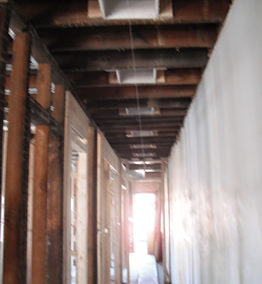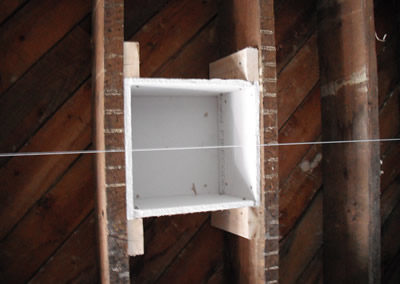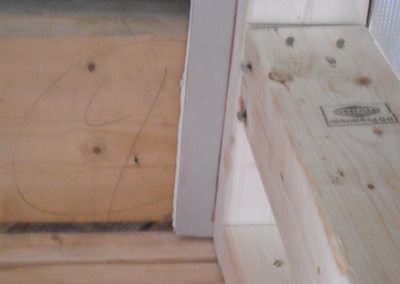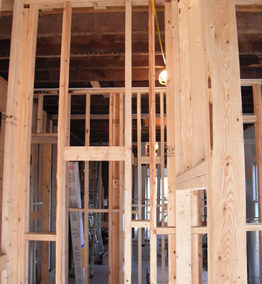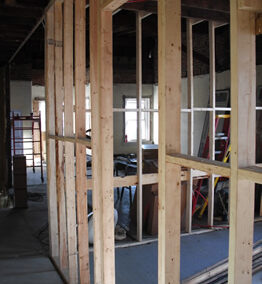During the 1960’s and 1970’s, several catastrophic fires in residentialdwellings prompted changes in building codes. Preventative measures,aimed at stopping and/or slowing the spread of fire through a housewere introduced and enforced. One such requirement is fireblocking,defined by the International Residential Code (IRC) as the following:
Building materialsinstalled to resist the free passage of flame to other areas of the building through
concealed spaces. The IRC stipulates that blocking (accomplished by nailing a piece of2X4 lumber between each stud in the framed wall) must be installed as follows:
1. In concealed spaces of stud walls and partitions.
2. Vertically at the ceiling and floor levels.
3. Horizontally at intervals not exceeding 10 feet.
4. At openings around vents, pipes, ducts, cables and wires at ceiling andfloor level, with an approved material to resist the free passage of flame and products of combustion.
Althoughthese blocks will not stop a fire completely, they will help containflames for several hours. If you think about it, a wall stud baywithout blocking, can serve as a vented chimney for flames andcombustible gases. This is particularly worrisome in older houseswhere balloon framing was used. Within minutes, a fire started in abasement kitchen can travel several stories through a stud bay and setthe attic ablaze.
Therefore,we installed blocking (at approximately 5 feet) between each stud inevery interior wall on both the first and second floors, and sprayedall holes around plumbing pipes, HVAC lines, and electrical wires withspecial fire-resistant foam.
The IRC goes on to stipulate that,Dwellingunits in two-family dwellings shall be separated from each other bywall and/or floor assemblies having not less than a 1-hourfire-resistance rating when tested in accordance with ASTME 119.We accomplished this by installing strips of 5/8-inch “fire-code”drywall above the top plate of each interior wall on the first floor(done prior to building and standing up the framing walls.) The same5/8-inch drywall will be used on the ceiling on each floor since itcarries a minimum 1-hour fire rating, as opposed to the 30-minuterating attached to ½-inch drywall. In addition to being thicker,fire-code drywall has a denser core and is manufactured with glassfibers that eliminate crumbling in heat.
Lastly,we had to address the 30 recessed lights on the first floor. Sinceeach of these lights is cut into the fire-code ceiling drywall, we wererequired to install a box (carrying a 1-hour minimum fire rating)around the top of each light fixture. We had the option of purchasingpre-made ready to install boxes, or building them ourselves out offraming lumber and 5/8-inch drywall. In view of the significant pricedifference – $130 per pre-made box as opposed to $10 per home-made box– we opted to build them ourselves. Considering that there were 30lights this saved the client approximately $3,600.
